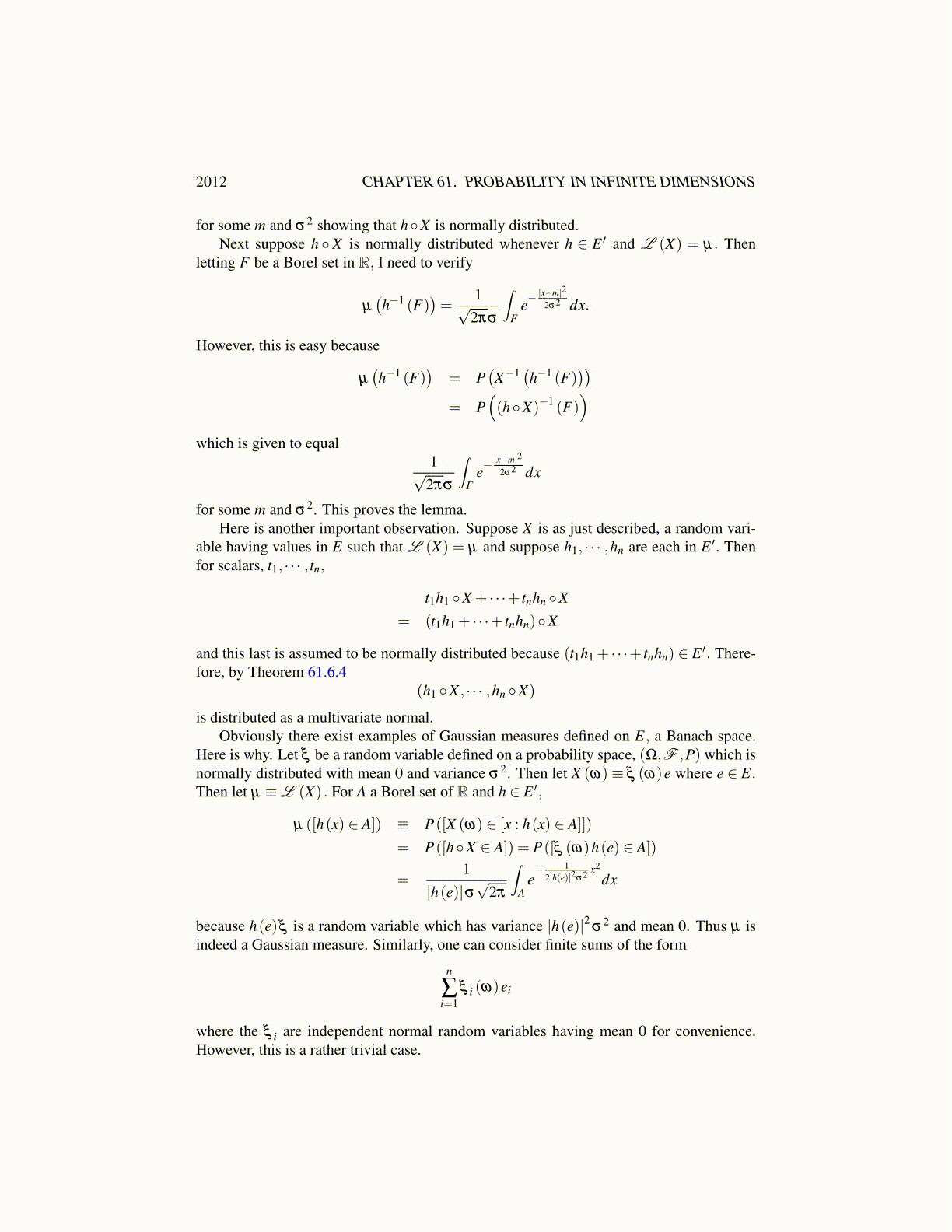
2012 CHAPTER 61. PROBABILITY IN INFINITE DIMENSIONS
There is another definition of symmetric. First here are a few simple conventions. Forf ∈ E ′,x→ f (x) is normally distributed. In particular,∫
E| f (x)|dµ < ∞
and so it makes sense to define
mµ ( f )≡∫
Ef (x)dµ.
Thus mµ ( f ) is the mean of the random variable x→ f (x). It is obvious that f →mµ ( f ) islinear. Also define the variance σ2 ( f ) by
σ2 ( f )≡
∫E
(f (x)−mµ ( f )
)2 dµ
This is finite because x→ f (x) is normally distributed. The following lemma gives suchan equivalent condition for µ to be symmetric.
Lemma 61.7.2 Let µ be a Gaussian measure defined on B (E) . Then µ (F) = µ (−F) forall F Borel if and only if mµ ( f ) = 0 for all f ∈ E ′. Such a Gaussian measure is calledsymmetric.
Proof: Suppose first mµ ( f ) = 0 for all f ∈ E ′. Let
G≡ f−11 (F1)∩ f−1
2 (F2)∩·· ·∩ f−1m (Fm)
where Fi is a Borel set of R and each fi ∈ E ′. Since every linear combination of the fiis in E ′, every such linear combination is normally distributed and so f ≡ ( f1, · · · , fm) ismultivariate normal. That is, λ f the distribution measure, is multivariate normal. Sinceeach mµ ( f ) = 0, it follows
µ (G) = λ f
(m
∏i=1
Fi
)= λ f
(m
∏i=1−Fi
)= µ (−G) (61.7.24)
By Lemma 21.1.6 on Page 645 there exists a countable subset, D ≡ { fk}∞
k=1 of the closedunit ball such that for every x ∈ E,
||x||= supf∈D| f (x)| .
Therefore, letting D(a,r) denote the closed ball centered at a having radius r, it follows
D(a,r) = ∩∞k=1 f−1
k (D( fk (a) ,r))
LetDn (a,r) = ∩n
k=1 f−1k (D( fk (a) ,r))
Then by 61.7.24µ (Dn (a,r)) = µ (−Dn (a,r))